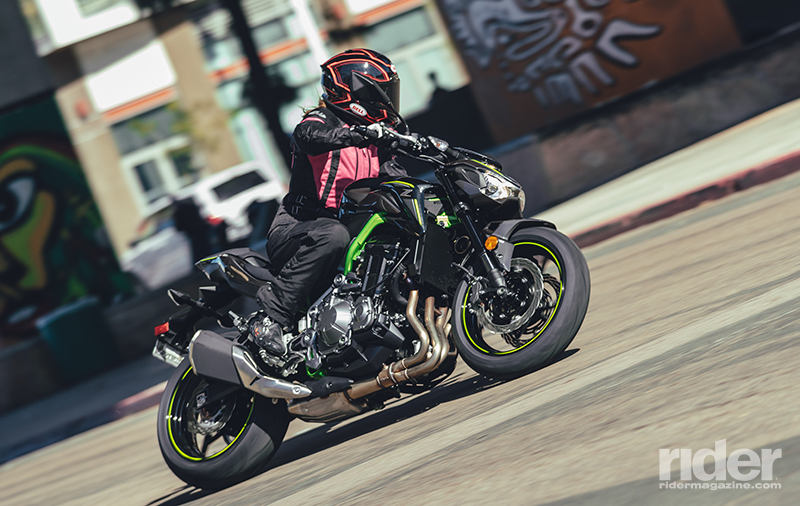
The Z900 is a storied model in the history of both Kawasaki and motorcycling as a whole. In 1972, the 903cc Z1 was launched as the most powerful Japanese 4-cylinder 4-stroke in the world, and it immediately got down to the business of winning races, setting records and nabbing awards, until it was succeeded by the larger Z1000 in 1976. Another barely sub-liter displacement inline-four cylinder engine made an appearance in the famous GPZ900R, the first stock road bike to exceed 150 mph, but the Z series stuck with the “bigger is better” philosophy—until now.
In today’s Z household, we’ve already been introduced to Baby Bear (the Z125 Pro—see our First Ride Review) and Mama Bear (the Z650—see our First Ride Review). Now it’s time to meet Papa Bear, the 2017 Z900. The Z900 replaces both the sharp looking but plain vanilla-flavored Z800, which is being discontinued, and the insectlike Z1000, which is no longer offered in the U.S.
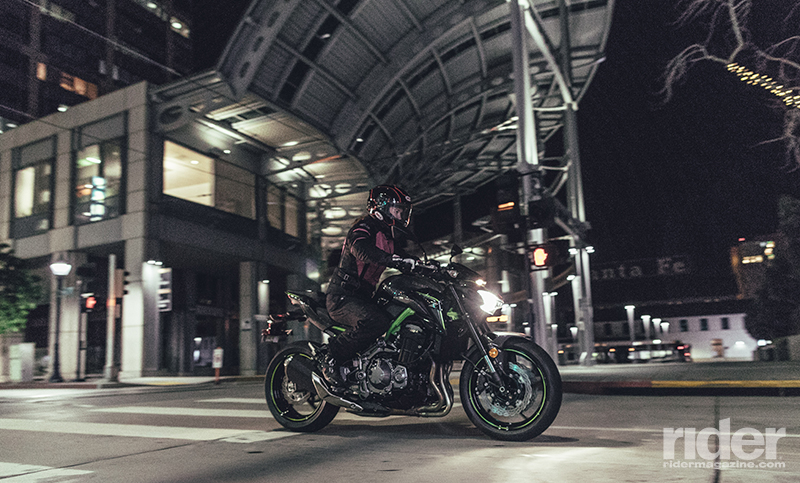
Kawasaki hosted its press launch for the new Z900 in San Diego, where our initial “how do you do” took the form of ripping around the darkened downtown streets on a howling herd of the black-and-green beasts, followed by a spirited tour of some beautifully curvy roads near the Mexican border the next day.
Climbing aboard and thumbing the starter, my first impression was how different the new bike feels from the outgoing Z800. For one thing, it’s a claimed 46 pounds lighter, thanks to a new steel trellis frame and the new 948cc inline-four cylinder engine. The handlebar is wider, offering a feeling of leverage and stability, and the seat is an inch and a half lower, at 31.3 inches. The rider ergonomics are similar to other modern naked bikes, keeping much of your weight off your hands while still welcoming a more forward lean for aggressive riding.
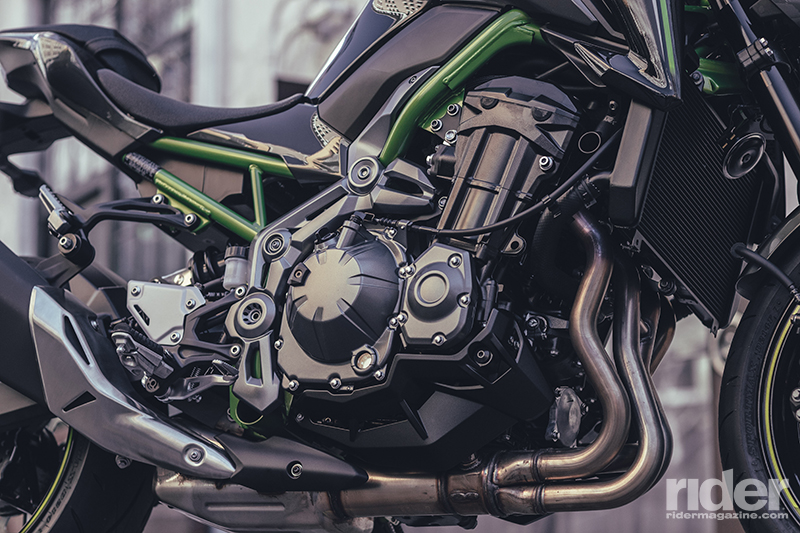
As we pulled away from the sidewalk, I gently feathered the clutch lever out, bracing myself for the same snatchy behavior I’d recently experienced on the new Z650 and Ninja 650—but the Z900 pulled smoothly away. With the “assist” function of the assist-and-slipper clutch, it made easy work of the many stop signs downtown.
Hitting the highway the following morning, we got a chance to test out the new engine’s rev-happy character. Kawasaki invested a lot of effort not just in the Z900’s performance, but also in the sensations of riding: sight, sound and feel. Its own Kawasaki Sound Research division helped design the shape of the airbox, tuning it for just the right intake note, and the intake funnels have varying lengths that perform double-duty, increasing performance and generating sound. A lightweight crankshaft contributes to the engine’s playful, quick-revving nature. The rider is encouraged to stay above 5,000 rpm, with the power really pouring on after 6,000 rpm and howling all the way to redline at 11,000.
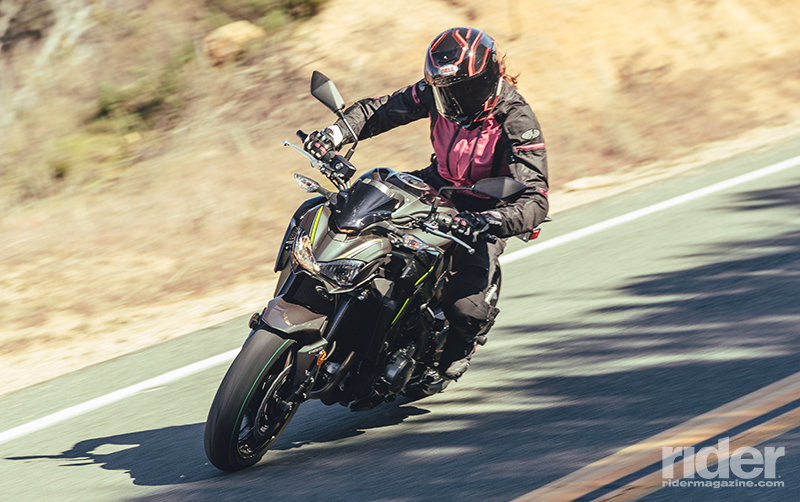
Picking up the pace through the mountains, the Z900 proved to be a well-sorted machine. The stiff chassis is a nice match for the silky-smooth engine, and rather than having to muscle it around I could simply nudge it left or right and rotate my throttle hand, enjoying the sounds echoing off the rock walls and the intoxicating rush that comes from a liter-class inline-four. The Z900 shares very similar rake and trail numbers with the Z1000, with a half-inch longer wheelbase that’s closer to the Z800. The combination results in a machine that’s quick-steering yet stable.
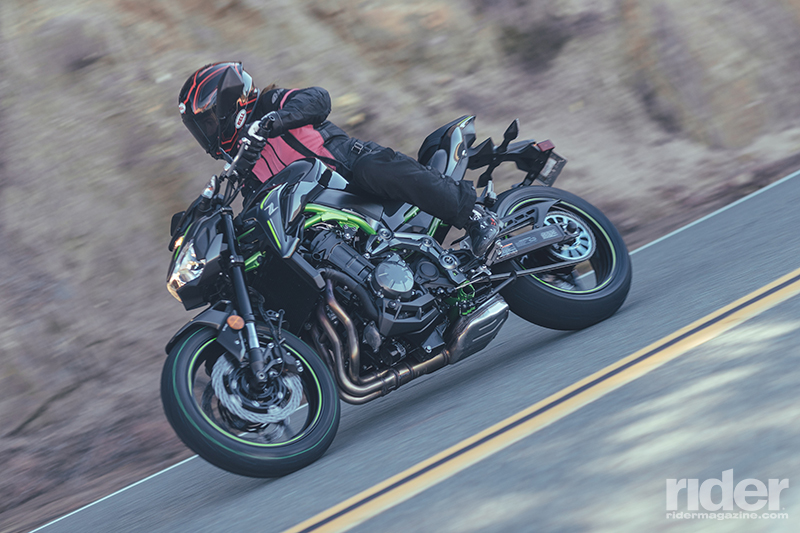
At $8,399 (plus $400 for ABS), the Z900 is the same price as the outgoing Z800, but it’s undoubtedly a lot more bike. With Yamaha’s revamped FZ-09 hitting $8,999 this year, the Kawi might now be the bargain blaster king…but that is yet to be determined (wink, wink.)
However, as with the original FZ-09, the Z900 had to give up a few accouterments to achieve its stellar price. Its 41mm inverted Kayaba fork and horizontal back-link rear Kayaba shock are adjustable for rebound and preload, but not compression. Kawasaki says it sprung the Z900 for an 80 kilogram rider (approx. 176 pounds), and while that made it a bit too stiff for little old me, other testers found it plush enough for comfort, but stiff enough for aggressive canyon riding. It also lacks any electronic aids (with the exception of the optional ABS), throttle-by-wire or riding modes. The brakes (dual 300mm petal discs with opposed 4-piston calipers up front and a single 250mm disc in back) do their job well, but offer little initial bite and a wooden feel. That said, if you’re looking for a bike with liter-class power, style to spare and enough comfort to survive a full day in the saddle, and you don’t want or need a lot of bells and whistles, the Z900 is worth a hard look.
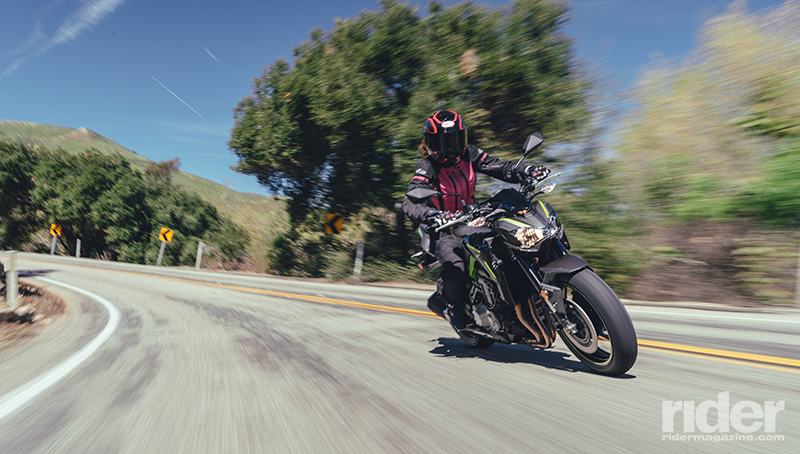
In the Z household, this Goldilocks found Papa Bear to be “just right.” The Z900 seems to offer an ideal blend of accessibility, performance, power, comfort and the all-important fun factor, all wrapped in a muscular and unique style that’s just edgy enough to stand out from the crowd.
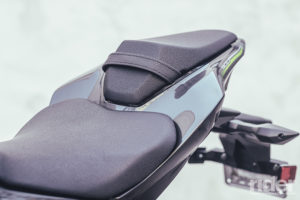
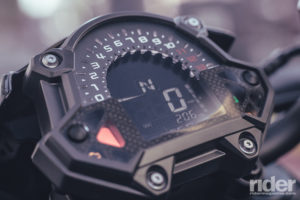
2017 Kawasaki Z900 ABS Specs
Base Price: $8,399 ($8,799 as tested, with ABS)
Website: kawasaki.com
Engine Type: Liquid-cooled, DOHC inline-four, 4 valves per cyl.
Displacement: 948cc
Bore x Stroke: 73.4 x 56.0mm
Transmission: 6-speed, wet assist-and-slipper clutch
Final Drive: O-ring chain
Wheelbase: 57.1 in.
Rake/Trail: 24.5 degrees/4.1 in.
Seat Height: 31.3 in.
Claimed Wet Weight: 463 lbs.
Fuel Capacity: 4.5 gals.
MPG: NA
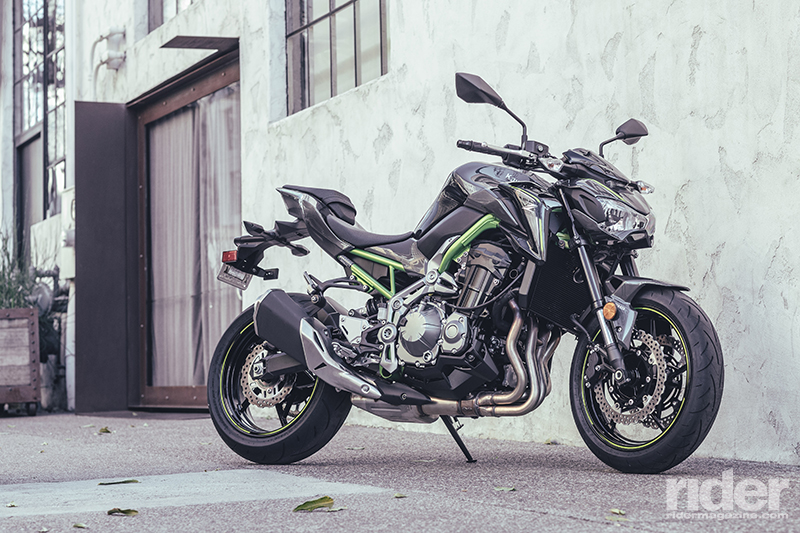








Very much looking forward to this being my next inline 4 after two decades of vtwins. Going back to my roots!
I am considering to buy a Kawasaki z900 or a Yamaha MT09. Z900 feels more stable. Also the riding position feels more steady in the wind with the Z900. BUT Z900 has no electric functions, such as driving mode and traction control.
So I am leaning towards MT09.
For that price it’s a bargain, many old school riders won’t need the electronics. With suspension set up for 180 lbs. more or less, and a seat height of below 32″ Kawasaki will sell more than a few of them.
Nice bare-bones machine. This bike checks all the boxes for someone that rides solo and just wants to enjoy the ride without taking along an electronics factory for support.
Got mine today,..it’s delicious.
I like the Kawasaki Z900 ABS,but I can get a Yamaha FZ09 for less and tires for life from my local Christian Yamaha Dealer.That triple roars and you don’t have to rev it out.It’s a Torque Monster.